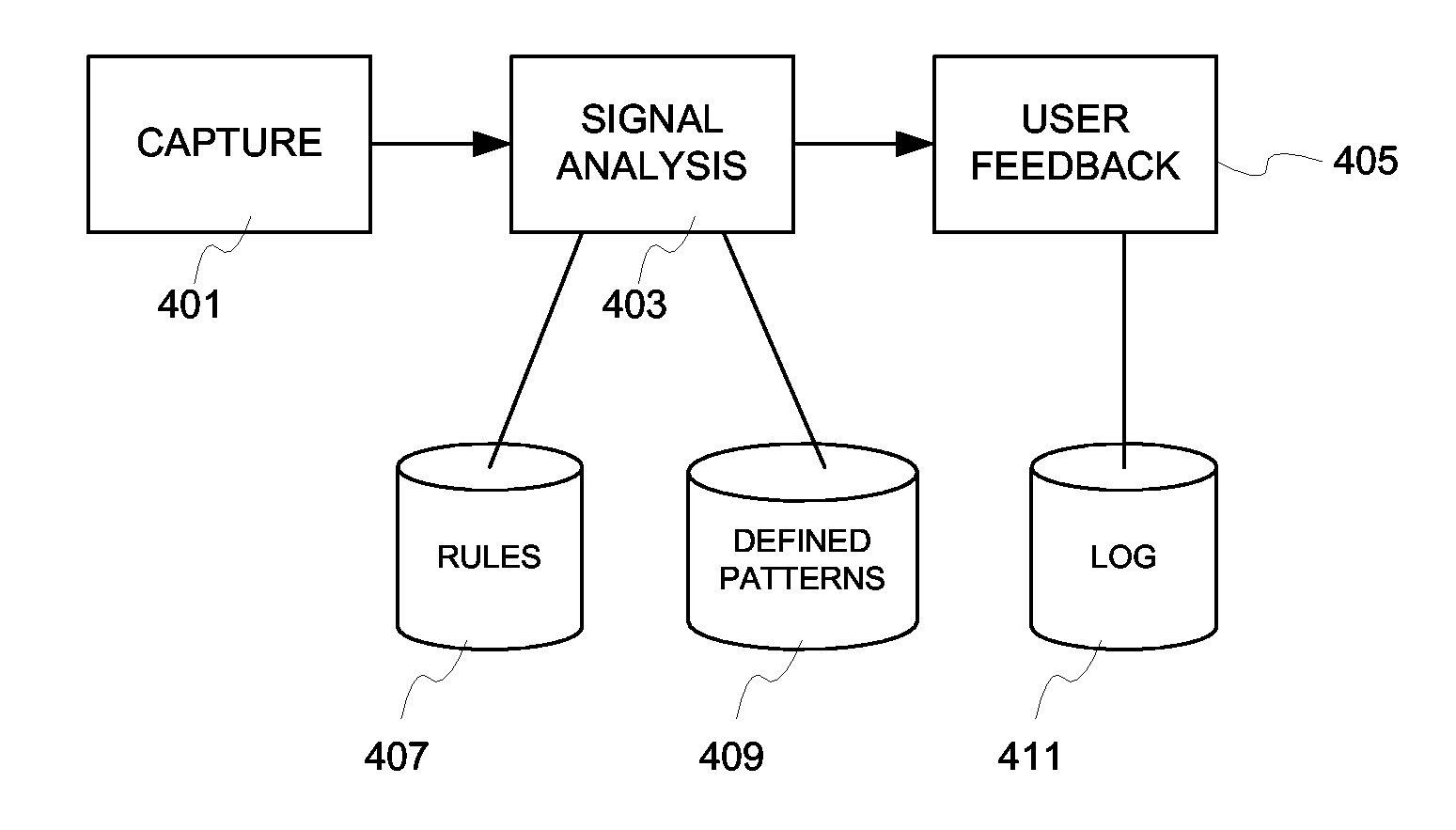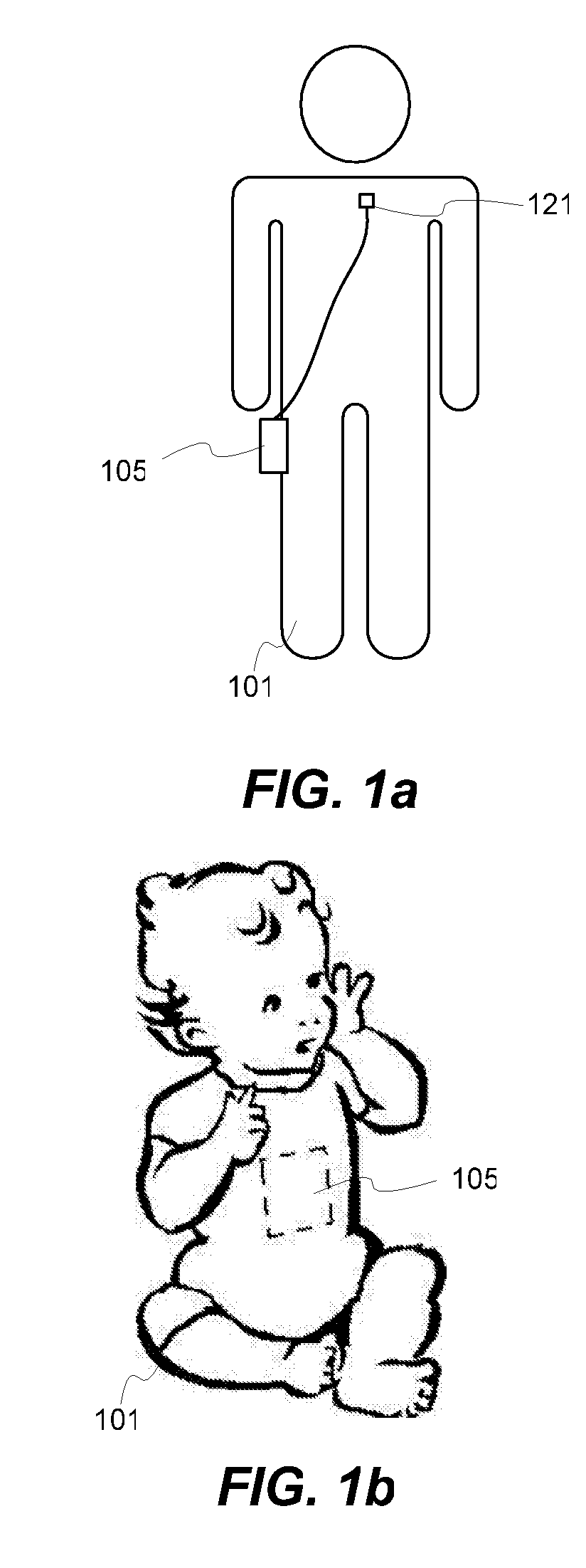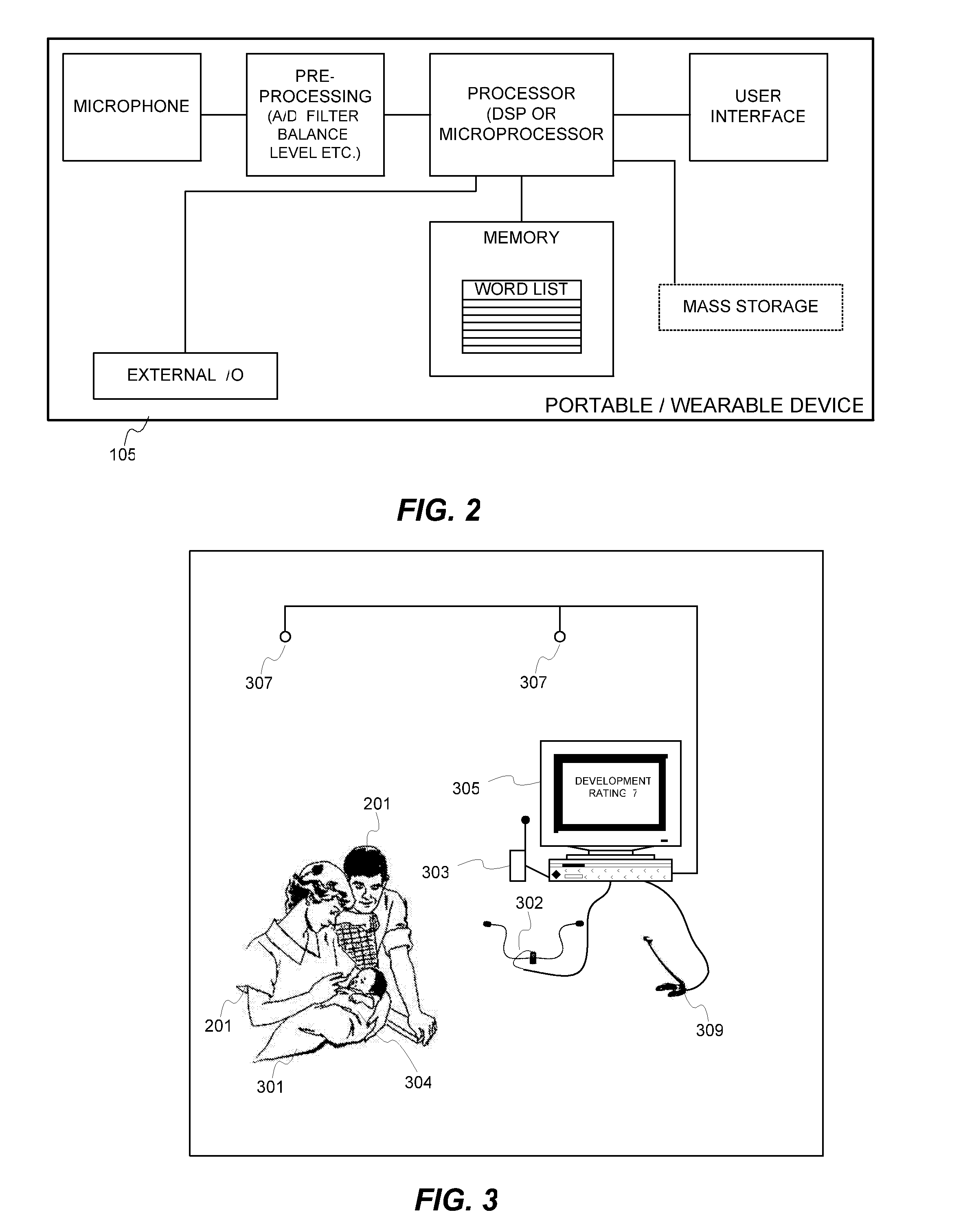Systems and methods for learning using contextual feedback
a learning system and contextual feedback technology, applied in the field of educational enhancement software and systems, can solve the problems of difficult and expensive study such as that undertaken by hart and risley, laborious coding of text using human observers and transcribers, and high cost of audio recording transcription, so as to support the vocabulary and language development of children and improve cognitive function. the effect of functioning
- Summary
- Abstract
- Description
- Claims
- Application Information
AI Technical Summary
Benefits of technology
Problems solved by technology
Method used
Image
Examples
Embodiment Construction
[0025] The present invention is illustrated and described in terms of an educational support system specifically adapted to support vocabulary and language improvement in children by enabling parents, teachers, and other adults who work with the children to be more aware of the listening environment around the children. Another purpose is to provide a means to easily measure the level of a child's language, vocabulary, and cognitive functioning in a naturalistic setting. It is contemplated that the present invention may be adapted to support learning of various subject matter including mathematics, science, social sciences, and other language arts skills. Various fields of endeavor often have a domain-specific vocabulary or “academic vocabulary” that is unique to that field of endeavor. Learning that vocabulary is often a precursor to success in that field. The techniques of the present invention are adapted to monitor, analyze and report on vocabulary usage (e.g., words used and fr...
PUM
 Login to View More
Login to View More Abstract
Description
Claims
Application Information
 Login to View More
Login to View More - R&D
- Intellectual Property
- Life Sciences
- Materials
- Tech Scout
- Unparalleled Data Quality
- Higher Quality Content
- 60% Fewer Hallucinations
Browse by: Latest US Patents, China's latest patents, Technical Efficacy Thesaurus, Application Domain, Technology Topic, Popular Technical Reports.
© 2025 PatSnap. All rights reserved.Legal|Privacy policy|Modern Slavery Act Transparency Statement|Sitemap|About US| Contact US: help@patsnap.com



